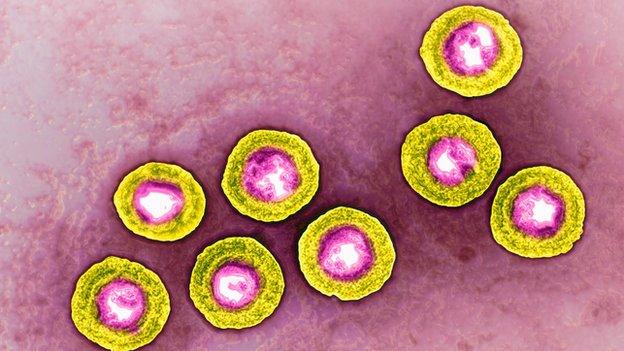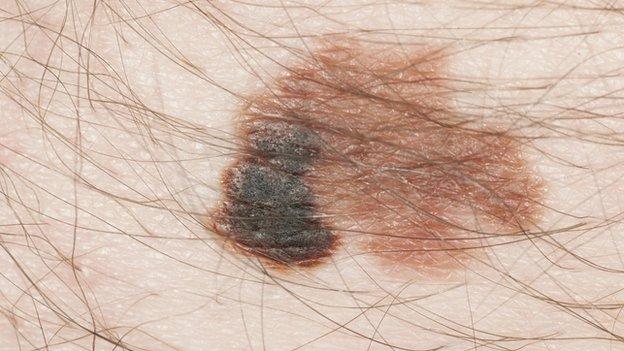Melanoma skin cancer guidelines for NHS updated
- Published

Melanoma caused 2,000 deaths in the UK in 2012
New guidelines for diagnosing and treating melanoma skin cancers have been issued to the NHS in England.
The National Institute for Health and Care Excellence (NICE) hopes they will end a wide variation in the diagnosis and treatment of the disease.
They include advice on diagnosing how far the cancer has progressed, identifying the best treatment, and improvements to follow-up care.
Melanoma is a form of skin cancer that claims more lives than any other.
In 2012, the UK saw more than 2,000 deaths from melanoma and the number of melanoma cases is growing faster than any of the 10 most common cancers.
Experts believe this is largely down to the boom in foreign holidays over the past 40 years and, more recently, a big increase in the use of sunbeds.
Safe sun
Prof Mark Baker, from NICE, said everyone wants to enjoy the sun, but there are safe ways to do so.
"Using a sunscreen with a high SPF, spending time in the shade between 11:00 and 15:00, ensuring you don't burn, and covering up with a hat, T-shirt and sunglasses.
"But overexposure to ultraviolet light from the sun can have very serious repercussions.
"Melanoma causes more deaths than all other skin cancers combined. Its incidence is rising at a worrying rate, faster than any other cancer.
"This new guideline addresses areas where there is uncertainty or variation in practice, and will help clinicians to provide the very best care for people with suspected or diagnosed melanoma, wherever they live."
Experts warn that even though more people are now aware of the dangers of too much sun, it will be a generation or so before the number of melanoma deaths starts to fall.
- Published26 May 2015

- Published1 June 2015

- Published11 March 2015
